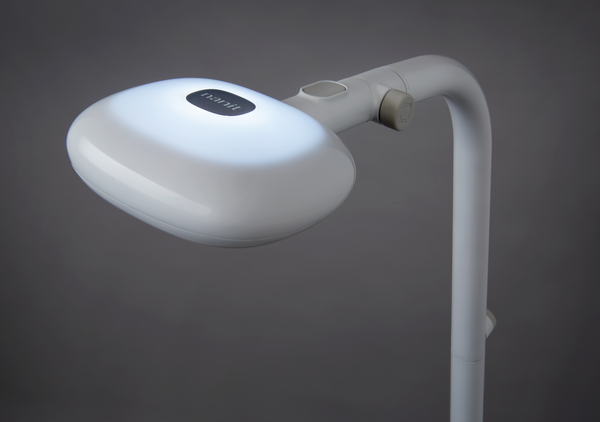Nowadays, doesn’t it seem like everyone has something to say about babies and sleep? From your boss’s third cousin’s Swedish nanny to that really cool dad at the park who’s never known the horror of a 2 a.m. wake-up call.
So how can you tell fact from fiction? We turned to Dr. Cory Kercher, assistant professor of pediatrics at Weill Cornell Medical College and mom of four, to get the whole sleep truth and nothing but the sleep truth.
Here she confirms and denies the biggest tips, myths and superstitions out there about infants and sleep.
1. Adding rice cereal to baby’s bottle = sleeping through the night
“No, no, no,” says Kercher about this old wives’ tale. Until around four to six months, babies shouldn’t be consuming anything but formula or breast milk. Even when they are of age, adding rice cereal to the bottle could actually make their life more difficult.
“It thickens up the milk a little bit and it can make it harder for the baby to suck through the nipple,” Kercher says. “The only time we tell people to do that is if the baby has a medical problem and they need their feeds thickened up a little. But for sleep? We never put rice cereal in a bottle.”
2. Bath time is essential for snooze time
A bath is a great way to help baby relax before bedtime. But it’s not a mandatory part of the routine. You can easily whisk baby off to dreamland minus the bubbles and spa regimen.
“Having a routine is important, whatever that wind-down time is,” Kercher says. “The actual thing that you choose doesn’t really matter – doesn’t have to be a bath, doesn’t have to be a massage.”
3. Don’t rush to soothe a crying baby
You’ve probably heard it before – if you want baby to sleep at night without your assistance, let ‘em cry it out. And it’s true. The cry-it-out method can help babies become better sleepers. But Kercher recommends waiting until baby is six months and able to self-soothe before trying it out. At that point, if baby cries at night, give them a chance to settle down on their own before stepping in to save the day. After all, not all of their noises deserve an immediate response. Sometimes they’re fidgeting, sometimes they’re getting comfortable, just like adults.
“We need to give them a chance to figure out how they can do what we do,” Kercher says. “You’re getting up in the middle of the night too. You just know how to self-soothe. And that’s what we need a baby to know how to do.”
4. If baby’s tired, you’ll know it
Infants have many ways of saying, “I’m sleepy, you guys!” Heavy eyes, yawning, ear-tugging. But overtiredness could reveal itself in ways you’d least expect. Like hyperactivity or irritability that can be confused with teething or illness. That’s why it’s so important for parents to get to know their baby’s individual sleep cues.
“Unfortunately, babies don’t all follow the text book,” Kercher says. “Every baby’s different and has different needs.”
5. Never wake a sleeping baby
For the most part, the old adage is true. Although, newborns will need to be woken up periodically to be fed. And you might have to wake baby from daytime naps if it’s affecting nighttime sleep. “Other than those two examples,” Kercher says, “I can’t think of any reason to wake up a baby.”
6. If baby sleeps late, they’ll wake up late
It seems like a no brainer. Keep baby up late and they’ll have no choice but to wake up later. Genius! The only problem? It doesn’t actually work. “People try that all the time,” Kercher says. “But often that will create the overtired problem.”
If baby is overtired, they might have a harder time falling asleep. Plus, some babies simply march to the beat of their own internal sleep clock, Kercher says. They’ll wake up early, no matter what you do.
7. Baby can sleep through just about anything
Not true. Babies have different sleep cycles, but they too go through stages of light and deep sleep. Just like us, they need peace and quiet to get those zzz’s.
“They don’t need complete silence, but at night they should have a good sleep environment,” Kercher says. “A quiet environment that’s nice and dark and peaceful because they can’t sleep through anything, just like we can’t sleep through anything.”
8. Flip baby to flip their sense of night and day
Newborns aren’t born with an inherent sense of night and day. After all, they’ve been in the womb for nine months! But flipping baby head over heels, as the old superstition goes, won’t help them tell night from day. There are, however, more practical steps you can take to convince baby to give up those vampire-like hours.
“From the beginning, you can do things like have lights on and normal voices and don’t tiptoe around during the day,” Kercher says. “At nighttime, keep lights low, very little stimulation. When the baby gets up to feed, put them right back to sleep so there’s very little interaction.”
9. Once a bad sleeper, always a bad sleeper
You can breathe a sigh of relief! This one isn’t true. It’s never too late to focus on good sleep hygiene. Although, it’ll be much harder to do away with bad sleep habits at 14 months than at 4 months. That’s why sleep training early can be a dream. “Sometimes it’s a lot of work in the immediate future, but you’re setting up for a better long term,” Kercher says.
Similarly, good sleepers won’t always stay good sleepers, especially if their normal routine is thrown off by a cold or travel. “Every time you feel like you got something under control, it changes,” Kercher says. “They might for months and months sleep beautifully through the night, no problem. And then, all of a sudden, they start waking up at night.”
There’s hope, though. According to Kercher, the fact that baby once slept through the night proves they can get the hang of sleep again.
Want to know if a sleep tip you’ve received is fact or fiction? Ask us on Facebook or Twitter!


































